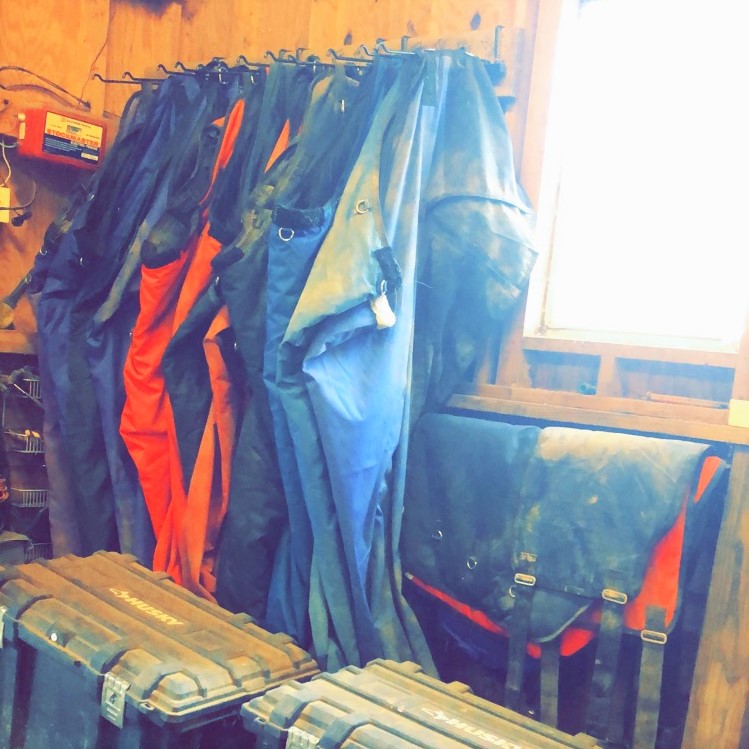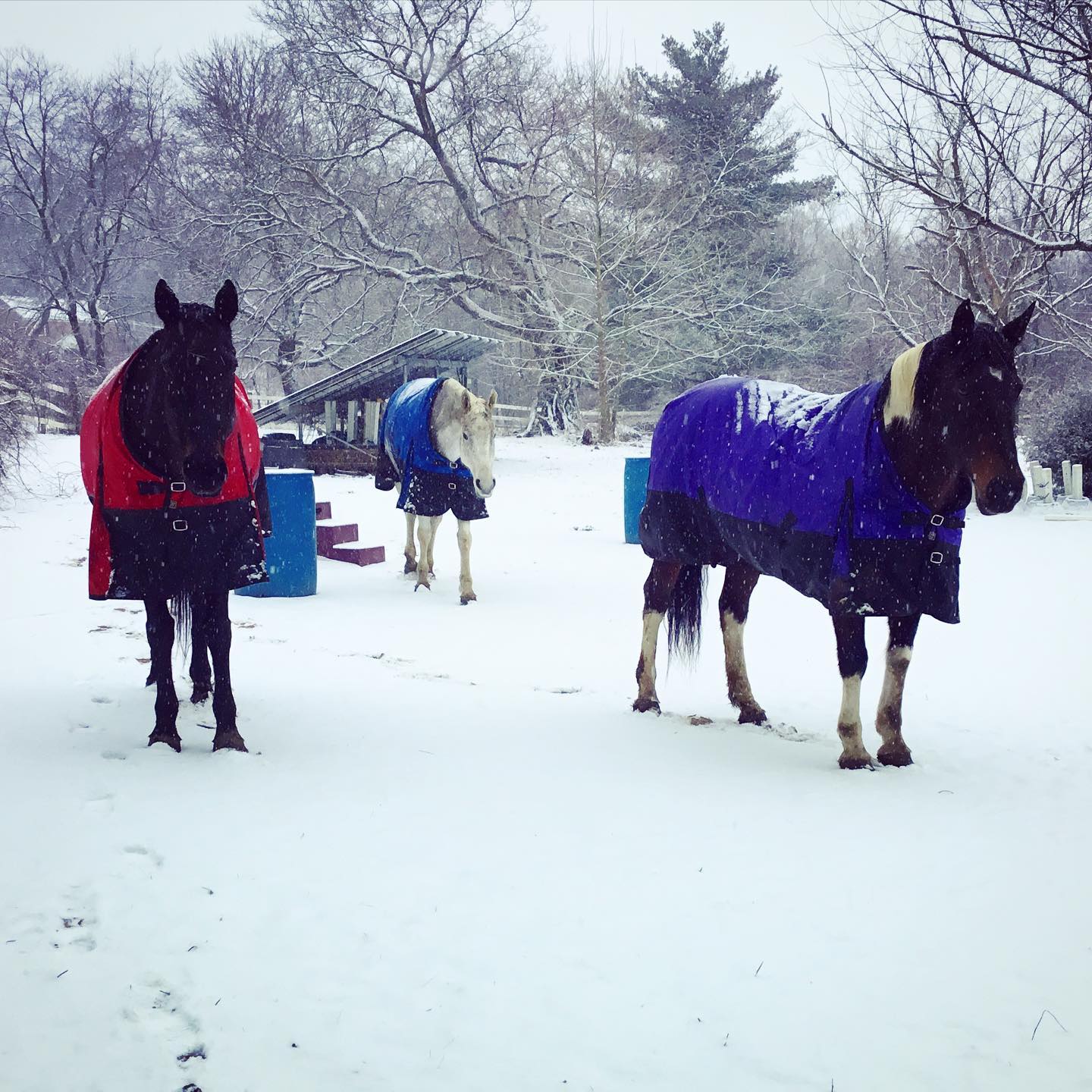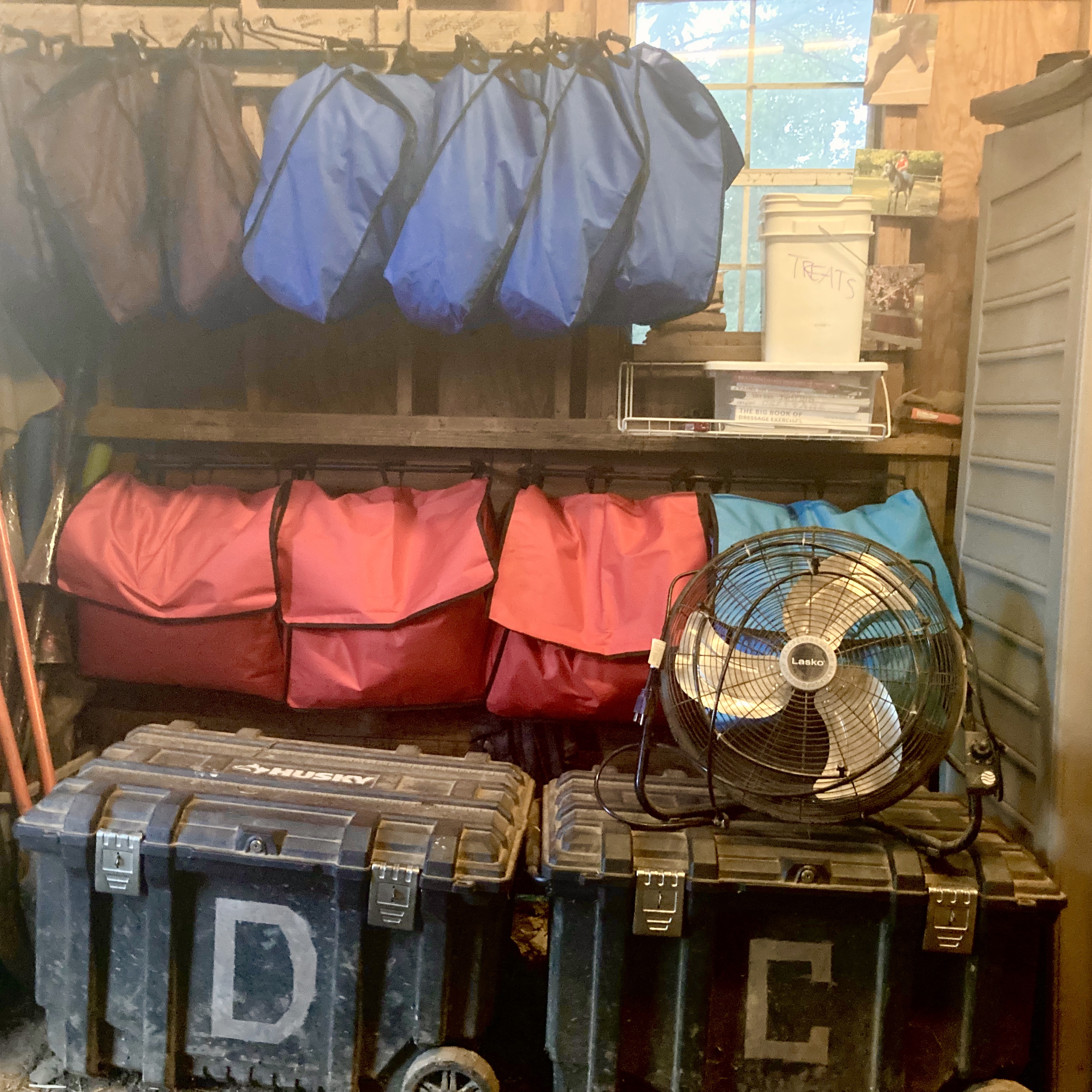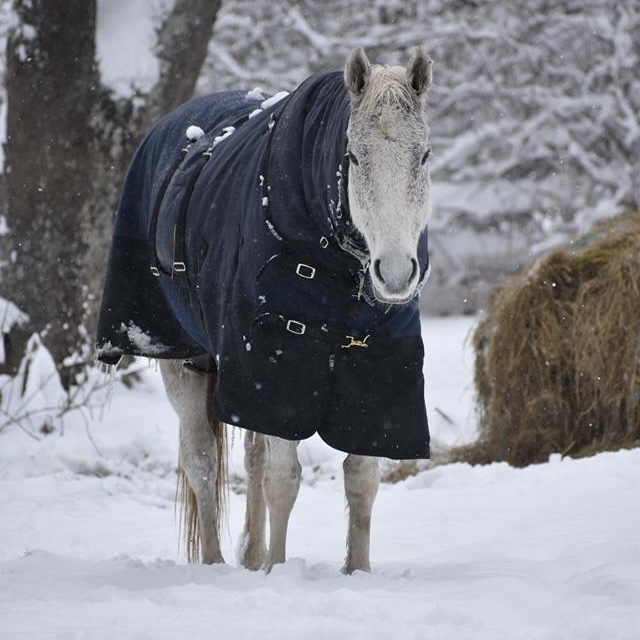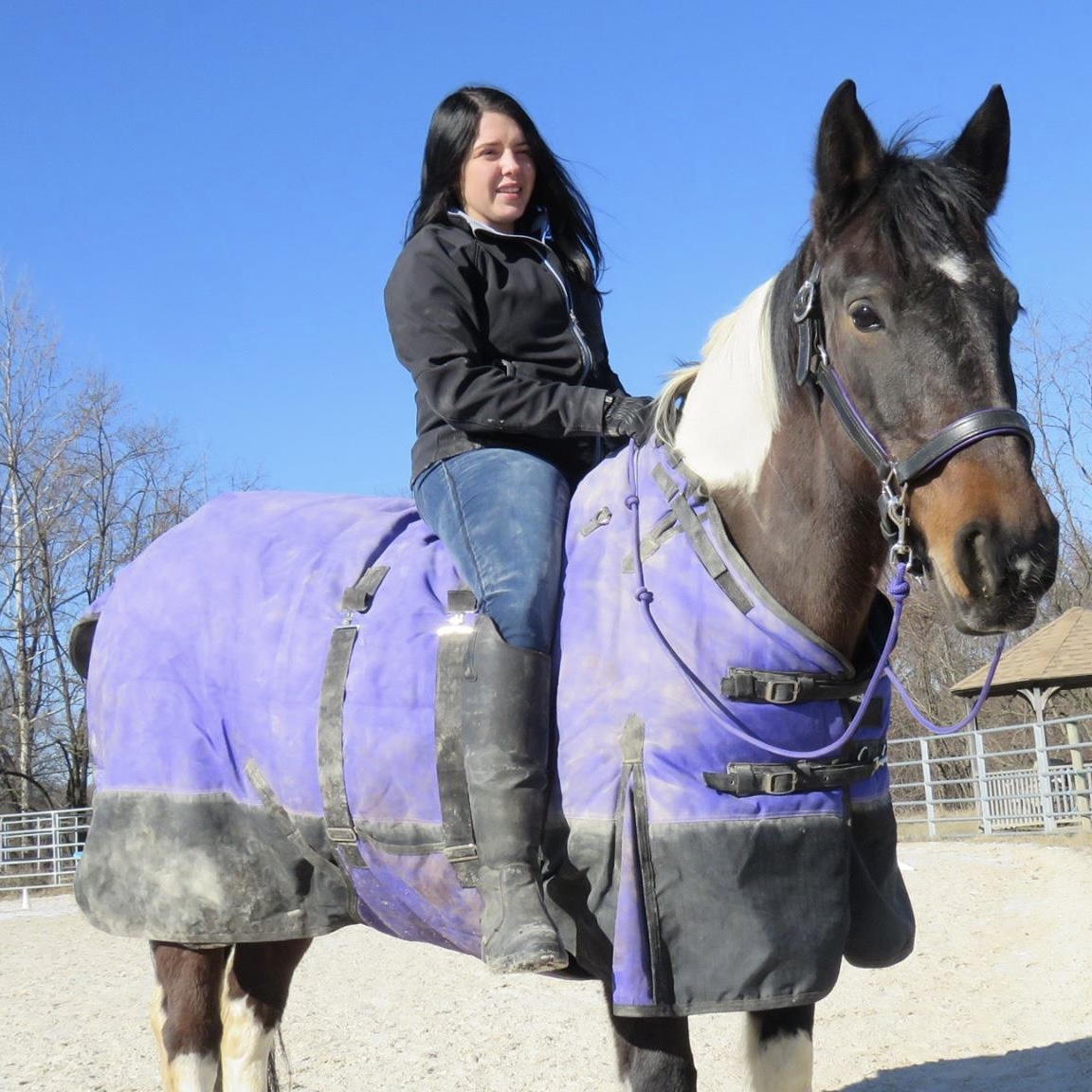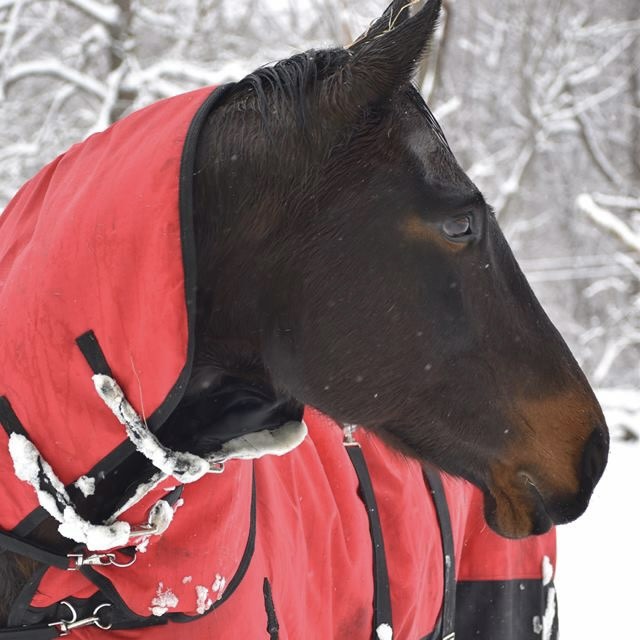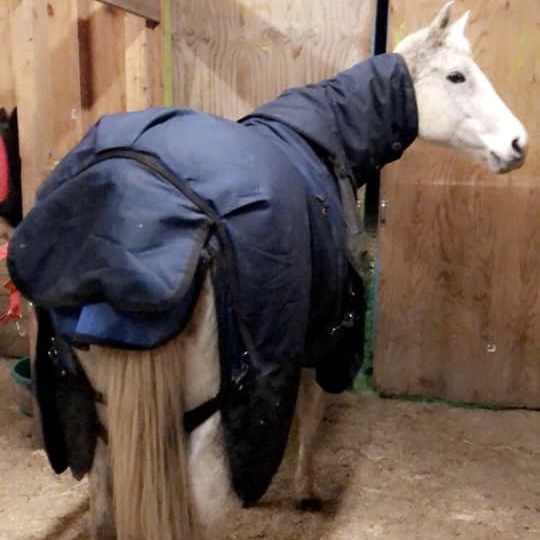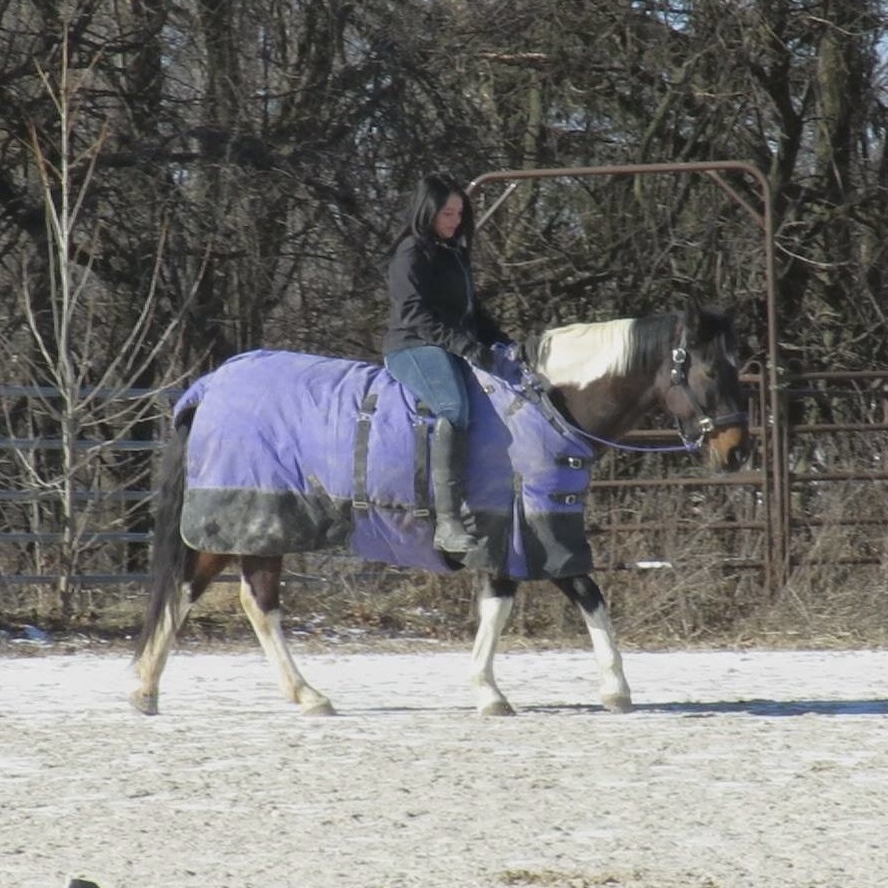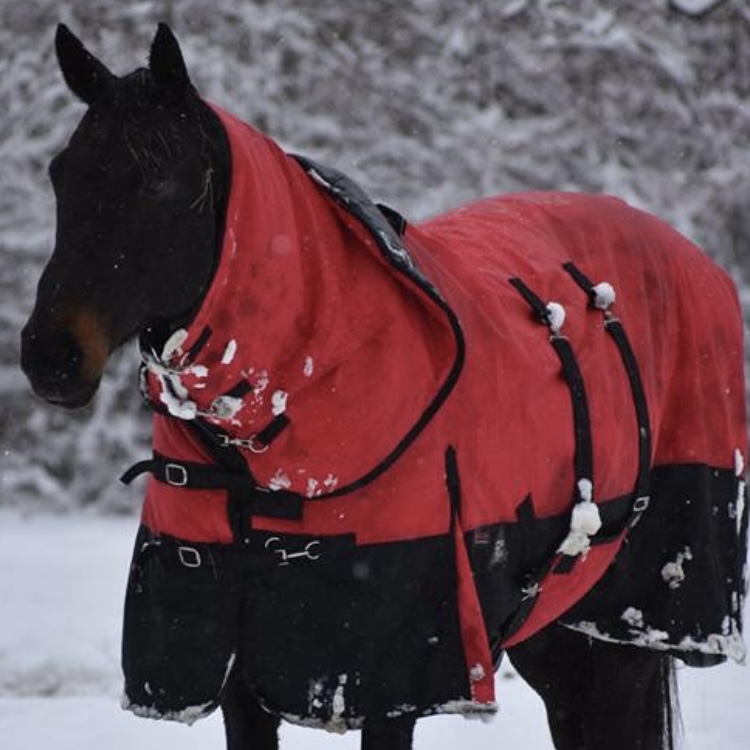Blankets & Storage
Product Reviews
Winter horse blanket prices seemed to have sky-rocketed over time when looking back and this trend can tend to intimidate owners into purchasing the more expensive option. First and foremost for the owner who is considering blanketing their horse, do your research. Understand the weather conditions that are common to your geographical area. Understand the needs of your horse or horses in whether or not the cold weather will stress them out without a blanket. Consider the everyday lifestyle of your horse regarding turnout, shelter, and stalling. Also consider the training and exercise regime expected of the horse throughout the colder season and if this impacts your horse's winter fur coat (such as if they are clipped for competition).
It is important to remember that undomesticated horses do just fine through the winter seasons without blanketing. Their winter coats come in thick and if the season is colder than expected, the body adjusts to grow a thicker winter coat the following year. As owners, we have become wimps in our own discomfort in the cold (not an attack, I'm a complete wimp in the cold!) and now it seems that almost every domesticated horse found in cold terrain is blanketed for the season. But as long as you understand that this is a human-sponsored luxury and is not a life-depending need of the horse, you are in good standings.
Understanding all the considerations above, there are both benefits and hazards to blanketing your horse with the coming cold winter. Benefits include helping to maintain weight on a hard-keeper who loses weight with any form of stress, including cold weather, as well as blanketing helps protect them from the elements while you have a sense of peace with your horse living a more natural life with full turnout. Some hazards to caution on blanketing is to make sure that a horse is not blanketed early before the real cold sets in or else they will not have a chance to grow their winter coat at all, to not have a heavy blanket on a horse when it is above freezing or else risk them over-heating and colicking, and to understand that blanketing in general gradually kills the winter coat over time so that it will not grow in thick each winter.
All that being said, it is acceptable to be a complete wimp in over-caring for your horses as RPE has become, so long as you have that understanding and open mind when other horses are being cared for differently and are perfectly healthy. RPE horses have several different layers that are used through the ever-chaning weather, as well as the awesome heavy blankets that are recommended below!
Recommended Heavy Blanket with Wraps ~ $90 - $115
Absolutely and without a doubt, RPE's award for the most cost-efficient and amazing-quality winter blanket goes to the HILASON 1200 Denier Waterproof Winter Horse Blankets (400g)! This blanket is an absolute must for any horse owner and the price is as though it's on a 50% sale year-round. All RPE horses have this blanket as their heavy winter blanket without question. Available on Amazon, the HILASON winter horse blankets come in a variety of colors and all come with a belly wrap included for approximately $90. To purchase the full set with the neck wrap included, the final price comes to approximately $115. This blanket has met all RPE needs including color choice (for horse color-coding), protection, durability (Dark Delight is a reigning blanket-destroyer), and secure fit (meaning it does not move nor rub the fur). Again, absolutely recommend this blanket if an owner is going to get any blanket (start with this one!). The only part that I've had to replace is the front clip on Dark Delight's (which you can purchase in bulk relatively cheap). Zero regrets and still in love! All three pictures below are HILASON heavy blankets (with Chloe having her light-fill sheet layer underneath for a Polar Vortex and it's crazy, negative degree weather).
Recommended Additional Blanket Layers - By Weight of Grams
While I love the HILASON heavy blankets, I will admit that I do have a few other blanket layers for my older mares. First and foremost, I will point out that honestly Mocha and Dreamer don't need the extra layers, but it helps me sleep better at night so they get to have them. Chloe is a horse who does truly benefit from having the different layers available, and having the option to go for a lighter layer does make working with all of the horses a little easier so that I don't have to worry about any of them over-heating. It is also important to point out that spoiling a handful of horses is far easier than setting up this system for a lesson barn of over twenty horses (which is simply unrealistic). The majority of horses do just fine in a medium to heavy blanket when temperatures drop below freezing, which is what most barns do. It is also important to point out that some horses truly do fine without any blankets and grow in a thick and protective winter coat. However, as horses do get older, some of them can truly benefit from the extra warmth and protection during the colder months.
So as for blanket weights go, I have my heavy blankets at 400g with hood and belly wraps, medium blankets at around 250g, my light fill sheets at 100g-150g depending on whether or not I have a 100g liner to go under a no-fill sheet or an actual 150g fill sheet (Chloe has the slightly warmer fill sheet), and no-fill sheets in the event of cold rain and wind but it's still too hot to really put anything above them.
I will say that as a personal standard, I don't put anything on when temperatures are 50 degress or higher as it's way too hot unless there is a severly ill and skinny horse in bad weather. Once we're looking at the 40's, I will consider putting on a fill sheet although it is important to point out that I always wait for temperatures to start dropping below freezing first before putting anything on them or else stunting the growth of their winter coat. Once the temperatures start bordering on freezing (drops just below at night time), I will work with fill sheets. If the weather is expected to be bad, or as temperatures continue to drop I will work my way to the thicker layers. I typically put medium blankets on when it is consistently below freezing, and heavy blankets when it is dropping to the low teens and single digits. I will also typically put hoods and wraps on during nighttime and take them off during the daytime unless there is inclimate weather. If the temperature drops below freezing, as with a polar vortex, I will layer the fill sheet / layer underneath of the heavy blanket for the duration.
JeffersPet Portable Blanket Bar - Blanket Organization
Portable blanket bars from JeffersPet have been the most budget-friendly product that is a steal in its purchase price for blanket organization. Vet wrap can also be used on the blanket bars for a better grip as well so that the blankets do not slide right off.
Blanket Bags - Protection & Organization
Chick's Saddlery was having another sale and blanket bags were among their discount items for the day which prompted me to give it a go. With having several layers for my mares, I typically leave the blankets hanging up. However, with the off/warm season of summer, I definitely prefer to fold and store the blankets away in bags to help keep them cleaner and keep the bugs from getting comfortable and making their own home that I have to clean up come winter. These bags that I got not only came in all of the colors I needed to color-code my mares, but are so much bigger than I expected. Some of these bags could fit two blankets (depending on the blanket heaviness). I will say that I wish that they came with a zipper instead of a single spot of velcro for closing, but for the sale that I purchased them on, they were well worth it. The hanging fasteners on the back of the bags also have me handling them with care, as they look like they could easily tear off if handled too rough. However, I am plenty happy with my blnaket bags and highly recommend!
